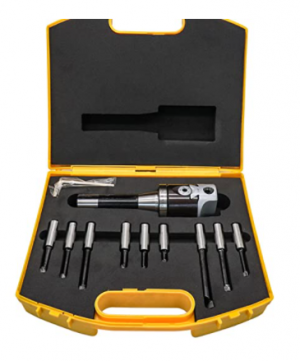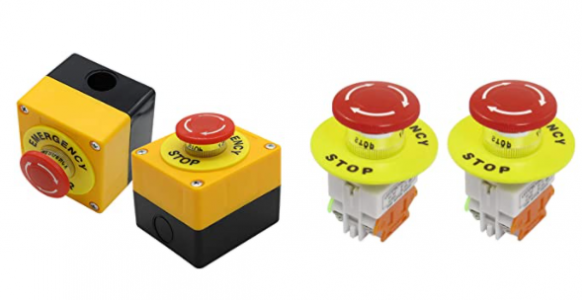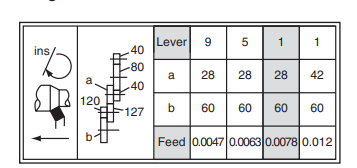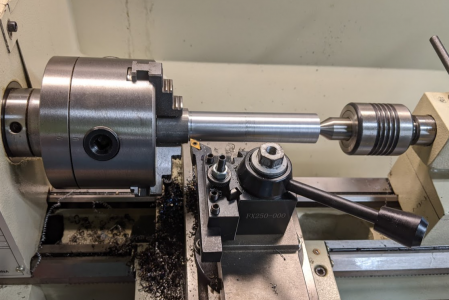For finish, carbide on small machines can be iffy that way. You can do better if you use the right feeds and speeds, but HSS will likely still outdo it. If you want to stick to inserts, try some polished inserts usually made for aluminum. They tend to be sharper and for the lighter loads we use at home, they hold up well in steel as well. And get some known material that is known to finish well. Starting with unknown material just complicates things. Even just 6061 aluminum is a good place to start. 1018 steel is not. I've had good luck with 12L14 and 303 stainless as well.
+1 to this.
I personally love the CCGX or CCGT inserts. Specifically the CCGX32.50 is my weapon of choice for a lot of things.

www.shars.com
Shars sells the asian brand ZCC for a lot of their inserts. They seem pretty high quality, much much better than Banggood or AliExpress inserts, but they cost proportionately more.
These inserts are pressed and then ground to a sharp edge (compared to pressed only for most steel cutting inserts). This dramatically reduces cutting forces at the expense of a weaker edge. I've found these to have near infinite life in aluminum and a pretty good life in steel and stainless. In fact these would be the only thing I'd use in stainless.
The last digit in the designation (CCGX32.5
0) indicates the corner radius. 0 = sharp, 1 = medium, 2 = large. The larger the radius, the faster you can feed for a desired surface finish. This however increases cutting forces and messes with dimensional accuracy. I prefer the sharp (0) corner since cutting forces are minimized and I can get within 2-3 tenths of my desired diameter without too much hassle. I'm also not in a rush and don't mind a longer machining time to get a nice finish.
The other benefit is the minimum depth of cut. With all tools, the sharpness of the edge indicates the minimum depth of cut at which the tool will no longer cut material and instead rub over the surface. With many steel focused inserts, this could be as large as 0.015" giving you very little flexibility to dial in a finishing pass (hence some people's preference for HSS). With these inserts, I've done depth of cuts in the 0.0005" range and still had it form a real chip. Once you get dust or crumbles, then you are no longer cutting.
I use these inserts for general roughing and finishing in Aluminum (my 12x36 lathe can take a 0.25" DOC with these!) and for finishing only in steel. If I need bulk material removal in steel, I will use a steel finishing insert. My lathe is not large enough to use general purpose or roughing steel inserts.






